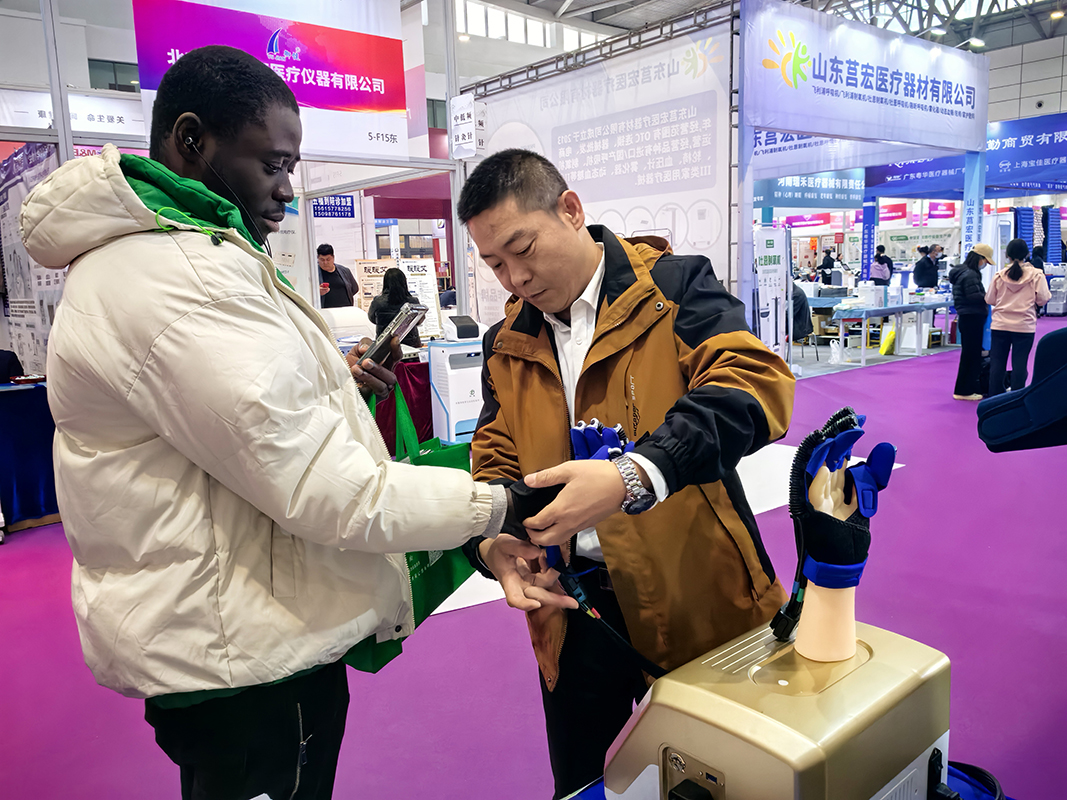The Future of Stroke Recovery: Exploring the Potential of Robotic Rehabilitation Gloves

Introduction
In the evolving landscape of medical technology, robotic rehabilitation gloves have emerged as a transformative tool for restoring hand and wrist function in stroke survivors and individuals with neurological impairments. By integrating robotics, neuroscience, and virtual reality (VR), these devices are revolutionizing home-based rehabilitation and offering new hope to millions worldwide. Below, we explore their mechanisms, beneficiaries, and evidence-based efficacy.
How Do Robotic Rehabilitation Gloves Work?
Robotic gloves utilize soft exoskeleton technology to guide patients through repetitive hand movements—a cornerstone of motor recovery. Embedded sensors monitor joint angles, grip strength, and movement patterns in real time, while actuators provide adaptive resistance or support calibrated to the user’s capabilities. Advanced models incorporate VR environments where patients engage in gamified exercises (e.g., manipulating virtual objects), stimulating neural pathways and enhancing cortical plasticity. Performance data is transmitted to therapists for remote monitoring and personalized treatment adjustments.
Who Benefits from Robotic Gloves?
· Stroke Survivors: Chronic stroke patients often suffer hand impairments. Gloves enable continuous, clinic-free therapy to address muscle stiffness, spasticity, and motor control deficits.
· Neurological Disorder Patients: Conditions like cerebral palsy, spinal cord injuries, or arthritis can be managed via tailored training programs.
· Aging Populations: As global populations age, demand for home-based rehab tools grows. These gloves reduce caregiver dependence and promote independent recovery.
Clinical Success Stories
· A University of Hertfordshire trial with 30 stroke patients found that 100 minutes of weekly glove-assisted practice yielded measurable improvements in hand function, with some regaining daily task capabilities.
· Beijing-based researchers used functional near-infrared spectroscopy (fNIRS) to show that robotic gloves paired with VR boosted prefrontal and motor cortex activation—critical for neuroplasticity.
Global Validation & Adoption
Robotic gloves are gaining traction through:
· Research Endorsement: Studies in IEEE Transactions on Neural Systems and Rehabilitation Engineering validate their safety and effectiveness.
· Regulatory Approvals: Devices like the EU-funded SCRIPT project and Chinese innovations (e.g., Angelexo, Shanghai Siyi) hold FDA and CE certifications.
· Market Growth: China’s rehabilitation robotics sector is projected to reach ¥795 million by 2026, driven by policy support and technological innovation.
A Call to Action
Despite promise, awareness remains low. Here’s why engagement matters:
· For Patients: Early adoption accelerates recovery and reduces long-term disability.
· For Clinicians: Tele-rehabilitation platforms using these gloves expand access to underserved populations.
· For Policymakers: R&D investment and subsidies can lower costs and democratize access.
As rehabilitation robotics expert Dr. Farshid Amirabdollahian notes: "Motivating patients to practice is half the battle. These gloves make therapy fun and data-driven."
Conclusion
Robotic rehabilitation gloves are more than technological marvels—they are a lifeline for reclaiming autonomy. By championing innovation and raising awareness, we can transform stroke recovery from a daunting challenge into a journey of hope.





